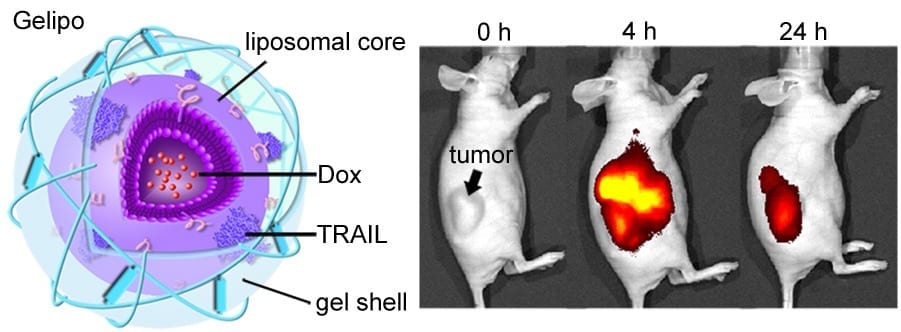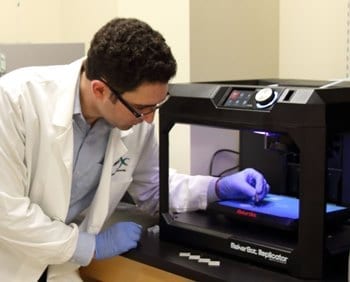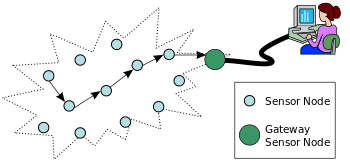
Researchers have developed a technique for creating nanoparticles that carry two different cancer-killing drugs into the body and deliver those drugs to separate parts of the cancer cell where they will be most effective.
The technique was developed by researchers at North Carolina State University and the University of North Carolina at Chapel Hill.
“In testing on laboratory mice, our technique resulted in significant improvement in breast cancer tumor reduction as compared to conventional treatment techniques,” says Dr. Zhen Gu, senior author of a paper on the research and an assistant professor in the joint biomedical engineering program at NC State and UNC-Chapel Hill.
“Cancer cells can develop resistance to chemotherapy drugs, but are less likely to develop resistance when multiple drugs are delivered simultaneously,” Gu says. “However, different drugs target different parts of the cancer cell. For example, the protein drug TRAIL is most effective against the cell membrane, while doxorubicin (Dox) is most effective when delivered to the nucleus. We’ve come up with a sequential and site-specific delivery technique that first delivers TRAIL to cancer cell membranes and then penetrates the membrane to deliver Dox to the nucleus.”
Gu’s research team developed nanoparticles with an outer shell made of hyaluronic acid (HA) woven together with TRAIL. The HA interacts with receptors on cancer cell membranes, which “grab” the nanoparticle. Enzymes in the cancer cell environment break down the HA, releasing TRAIL onto the cell membrane and ultimately triggering cell death.
When the HA shell breaks down, it also reveals the core of the nanoparticle, which is made of Dox that is embedded with peptides that allow the core to penetrate into the cancer cell. The cancer cell encases the core in a protective bubble called an endosome, but the peptides on the core cause the endosome to begin breaking apart. This spills the Dox into the cell where it can penetrate the nucleus and trigger cell death.
The Latest on: Nanoparticles for drug delivery
[google_news title=”” keyword=”Nanoparticles for drug delivery” num_posts=”10″ blurb_length=”0″ show_thumb=”left”]
via Google News
The Latest on: Nanoparticles for drug delivery
- Cows' milk particles used for effective oral delivery of drugson April 24, 2024 at 11:16 am
Researchers have found that tiny particles present in cows' milk could offer, for the first time, an effective method for the oral delivery of RNA drugs.
- Nanotechnology in Therapeuticson April 20, 2024 at 5:00 pm
Although progress in the application of nanotechnology to drug delivery has been dramatic and successful, as evidenced by some nanodrugs now on the market, several main challenges remain in this ...
- pH-Sensitive Polymeric Nanoparticles for Tumor-Targeting Doxorubicin Delivery: Concept and Recent Advanceson April 19, 2024 at 4:59 pm
Doxorubicin is a potent chemotherapeutic drug applied in the clinics ... new advances in pH-sensitive polymeric nanoparticles for doxorubicin delivery are presented and discussed.
- Drug delivery innovations push forth women’s healthon April 11, 2024 at 3:09 am
From nanoparticles to transdermal patches, Pharmaceutical Technology takes a look at the latest in drug delivery technologies for women's health.
- Biocompatible nanoparticles modified with ATP can enhance systemic delivery of cancer immunotherapyon March 27, 2024 at 10:01 am
The nanoparticles slowly release drugs that ... Moreover, the carriers traditionally used in local drug delivery offer limited utility in systemic application because they may not be compatible ...
- Designing nanoparticles for pregnancy-safe treatmentson March 8, 2024 at 10:42 am
The study shows that the lipid nanoparticles used in the Whitehead lab do not cross into the fetus. During pregnancy, the body has different barriers to drug delivery. One of the most obvious is ...
- Nature’s Lipid Nanoparticles: Exosomes in Drug Delivery and Therapeuticson February 28, 2023 at 5:55 pm
Exosomes have emerged as one of the most recent promising platforms for drug delivery and therapeutics for a wide range ... capabilities allow them to function as superior natural nanoparticles. Don't ...
- Precision Nanomedicines for Targeted Drug Deliveryon August 19, 2020 at 9:16 am
Kidney-Targeted Therapeutics: We are synthesizing nanoparticles that specifically target the kidneys. These will facilitate the development of new medicines to address many types of kidney diseases.
- Drug Delivery and Molecular Sensingon August 17, 2020 at 6:15 pm
These solutions include molecular conjugates and nanoparticles for targeted drug delivery, new imaging modalities for surgical guidance and detection of drug sensitivity, and new in vitro tumor models ...
- Smart nanoparticles for cancer drug deliveryon March 29, 2019 at 3:50 am
Magnetic metal oxide nanoparticles have demonstrated considerable promise for disease diagnosis, as magnetic resonance contrast agents, and as drug delivery agents, but mass production of such ...
via Bing News










